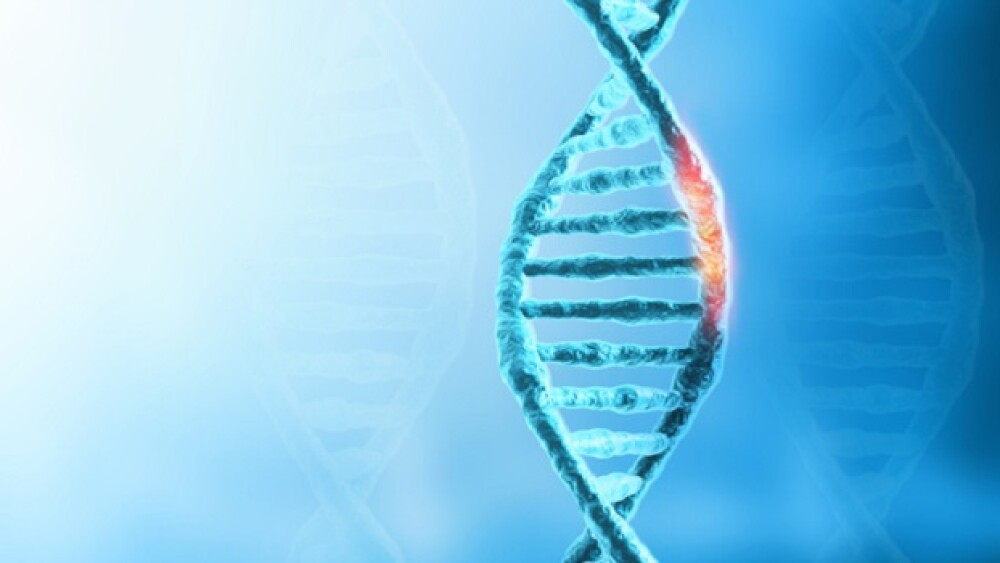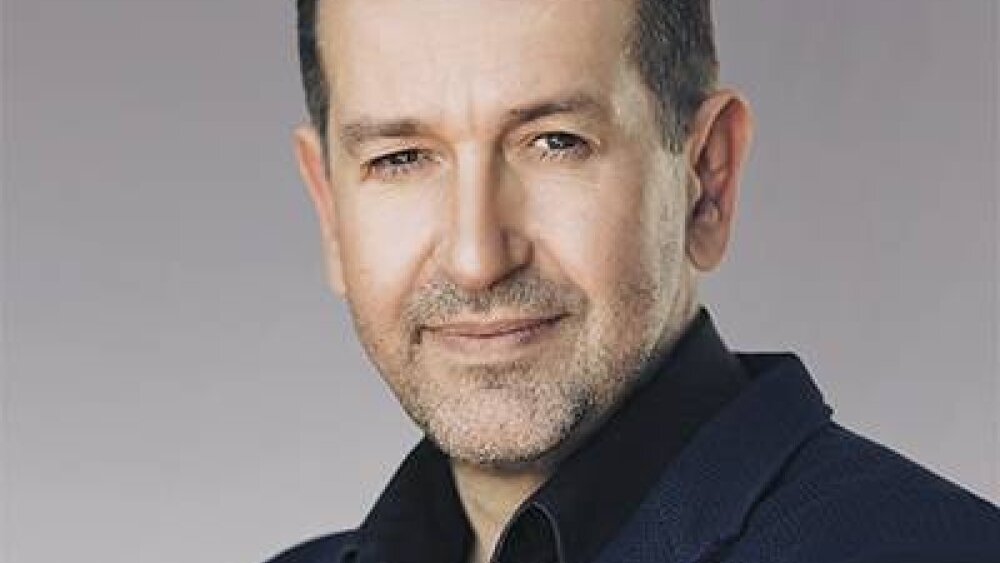This year’s AACR Annual Meeting is coming to a close, and there has been a wealth of information and data presented. One topic of discussion stood out—mutations.
This year’s American Association for Cancer Research (AACR) Annual Meeting is coming to a close, and there has been a wealth of information and data presented. Over the course of the past four days, one topic of discussion stood out—mutations.
Mutations, or abnormal changes in a person’s DNA, do not always cause cancer. When they do, the cancer often becomes more difficult to treat. But as is often the case in cancer treatment, it’s not that simple. According to a 2019 study by Nature Genetics, some tumors with a high number of mutations are actually more likely to respond to immunotherapy compared to cancers with fewer mutations.
This is just one of the reasons creating new therapies for cancer has proven to be so difficult. Fortunately, several companies have innovative ideas. Here’s a look at a few of the most notable presentations from companies working to provide treatment to patients with cancer-causing gene mutations.
Aadi Bioscience
Aadi Bioscience is a biopharmaceutical company working to bring transformational therapies to cancer patients with mTOR pathway driver alterations, specifically those in the TSC1 or TSC2 genes. Mutations in the mTOR pathway can cause many different types of cancers, but up until last year, there were no approved drugs on the market that targeted these genes. In November 2021, the U.S. Food and Drug Administration approved Aadi’s Fyarro as the first drug to treat PEComa, an ultra-rare form of sarcoma.
Fyarro is currently being tested in a tissue-agnostic setting, meaning that the tumors are defined by the genetic mutations that cause them, rather than where in the body they originate. At AACR, Aadi presented data explaining the frequency of TSC1 and TSC2 gene mutations in an effort to support the ongoing registration of the Fyarro clinical trial.
Brendan Delaney, COO of Aadi, explained that though oncologists are aware of the effects of these types of mutations, there is no therapy available that specifically targets them.
“The information is currently available to oncologists; it’s just that no therapy has proven to be active against these mutations,” Delaney said in an interview with BioSpace. “That’s what we’re trying to prove with Fyarro, and if we’re successful, we will change the way these patients are treated.”
Aadi presented data about Precision 1, the Phase II tumor-agnostic registration trial of Fyarro. The trial will include 120 patients aged 12 and older with solid tumors characterized by TSC1 and TSC2 inactivating mutations and consist of two parts: one for 60 patients with TSC1-mutated tumors, and one for 60 patients with TSC2 mutations. On March 31, the company announced it had dosed the first patient in the trial.
Delaney explained the reasoning behind the trial design.
“If one of those arms is successful, and the other is not, it would still allow us to gain approval for one versus the other. So, it gives optionality based on how the results play out. Our expectation, based on previous data, is that the product would be effective in both arms, but again, that’s what we’re trying to prove.”
Despite the trial’s early nature, Delaney said he is optimistic based on the positive results from Aadi’s Ampect trial, which studied the effect of nab-sirolimus as a treatment option for malignant PEComa. According to Delaney, this study is relevant to the Precision trial as some of the patients in the study overexpress TSC1 and TSC2 mutations. He also cited data from Aadi’s Expanded Access Program, which provides pre-approval investigational access to nab-sirolimus for certain patients who are unable to participate in a clinical trial.
If the trial is successful, Delaney said there are three ways it could affect patients and their oncologists. First, it would mean that patients with TSC1 or TSC2 mutations, regardless of their tumor type, could be eligible for Fyarro treatment, providing an alternative treatment strategy for patients who currently do not have one. Second, positive results would advance the field of precision oncology, and third, it would serve as a success in tumor-agnostic treatment, an area where there have been few successful studies.
“All of those things, if we’re successful, I think will definitely move cancer treatment forward in a big way,” Delaney said.
SOTIO Biotech
SOTIO, a biotech company based in Prague and Cambridge, MA, focuses on improving CAR-T therapies and stable antibody-drug conjugates (ADCs). In its poster presentation, SOTIO announced preclinical data on its immunocytokine SOT201 and the BOXR CAR-T cell therapy BOXR1030. The company’s focus, however, was on its oral presentation featuring SOT101.
SOT101 is an interleukin 15 (IL-15) superagonist intended for patients with selected relapsed tumors, refractory advanced tumors and metastatic solid tumors. The trial, currently in Phase I/Ib, aims to evaluate the safety and preliminary efficacy of the drug.
The trial includes patients with advanced and metastatic tumors who have already failed Checkpoint Inhibitor (CPI) Therapy, making them one of the most difficult populations to treat. Last November, SOTIO reported that the majority of the 13 patients in the trial had clinical benefit when treated with SOT101 in combination with Keytruda, including in CPI refractory patients.
On Tuesday, the company presented a summary of the data from Phase I of the trial, gathered over the past three years. There are two parts to the trial. The first is a classical monotherapy dose-escalation trial, where SOTIO reported that the compound does have monotherapy efficacy.
The second part of Phase I is a dose-escalation of the compound in combination with pembrolizumab in CPI refractory patients. The trial saw objective responses both in patients where CPIs have not been approved and CPI refractory patients. According to SOTIO CEO Radek Spisek, the most important piece of information relates to the objective response rate of patients during the dose escalation.
“The most important piece of information is that we see objective responses in let’s say about 30 to 40% of patients already during the dose escalation,” Spisek told BioSpace. “In other words, that means that the combination of this IL-15 superagonist plus checkpoint inhibitor seems to work in patients where checkpoint inhibitor monotherapy was not successful. So, that’s the most important.”
He also explained that SOT101 is a molecule injected into patients that specifically stimulates T cells and NK cells.
“In patients with tumors, we hope that the activation of those cell types will then lead to the recognition of the tumor cells by the lymphocytes and NK cells and subsequent killing of the tumor cells.”
Later this month, SOTIO will begin a basket trial in collaboration with Merck. Merck will provide pembrolizumab, and SOTIO will test SOT101 in combination with pembrolizumab in six different indications: prostate cancer, ovarian cancer, hepatocellular carcinoma, high colorectal cancer, non-small cell lung carcinoma and cutaneous skin squamous cell carcinoma. If all goes well, the companies will begin enrolling patients with these indications in a few years after the tests are completed.
Ikena Oncology
Ikena Oncology is a targeted oncology company that works to develop therapies to target the underlying mechanisms driving cancer survival and growth. At AACR, Ikena’s Chief Development Officer Dr. Jeff Ecsedy presented data in an oral presentation supporting the potential of IK-930, the company’s novel TEAD inhibitor, as a clinical agent.
IK-930 works by targeting the Hippo signaling pathway. It binds to TEAD transcription factors, preventing transcription of the genes that drive cancer progression. TEAD can be used in cancer therapy as both monotherapy treatment and in combination with other targeted agents in patients with solid tumors.
Ecsedy said that targeting TEAD and the Hippo pathway is a new approach altogether, and it has only recently been possible with the discovery of the drug-binding pocket and interface for druggability. He explained how the direct targeting of TEAD differs from the current standard of care in cancers with Hippo mutations.
“Given that the Hippo pathway is altered in approximately 10% of all human cancers, IK-930 provides an opportunity to specifically treat patients with genetically driven cancers with a significant unmet need. In many of these indications, standard of care therapy comprises variations of non-targeted immuno-, chemo-, and radiotherapies,” Ecsedy told BioSpace.
Ecsedy noted the development of this treatment is based on data published over the past decade that highlights the Hippo pathway as an important mechanism for therapeutic resistance. Ikena has also generated its own preclinical data, which Ecsedy further explained.
“Our preclinical data show that in EGFR or KRAS-mutated tumors, IK-930 combined with EGFR inhibitors and with a MEK1/2 inhibitor, respectively, enhanced apoptosis in vitro and antitumor activity in vivo. We intend to evaluate these combinations in patients and are exploring additional potential combinations as well,” he said.
The first patients were dosed in the IK-930 trial in January, and Ikena is now enrolling patients in the dose-escalation stage. Once Ikena reaches the recommended Phase II dose, the company plans to start monotherapy expansion cohorts. These will include patients with NF2 deficient mesothelioma and other NF2 deficient solid tumors, as well as epithelioid hemangioendothelioma (EHE) and other solid tumors with YAP1/TAZ gene fusions.
IK-930 is a first-in-human trial, and as such, the data from Phase I is pivotal to all in the oncology community, not just Ikena. The key objectives of Phase I are to define both the safety profile of IK-930, and a dose schedule that maximizes safety and potential benefit for these patients.
Ecsedy said the company’s priority is to provide a therapeutic for patients who currently have little to no treatment options.
“We are continually working to generate mechanistic and translational data to accompany our approaches and develop treatments for underserved cancer patient populations, working towards our vision of a world in which every cancer patient has a cure.”








